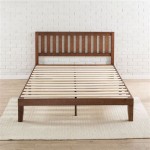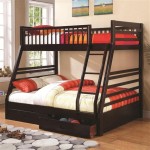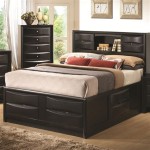What Do I Put On The Bottom of a Raised Garden Bed With Legs?
Raised garden beds, particularly those with legs, offer numerous benefits, such as improved drainage, easier accessibility, and the ability to control the soil composition. However, the question often arises about what to put on the bottom of these beds to ensure proper drainage and prevent rot. Choosing the right materials is crucial for the health and longevity of your raised garden bed.
Why It Matters
The bottom layer of your raised garden bed serves several important functions:
-
Drainage:
A well-drained bottom layer prevents water from pooling and saturating the soil, which can lead to root rot and disease. -
Pest Control:
A physical barrier between the soil and the bottom of the bed can deter pests like voles and other burrowing creatures. -
Weed Prevention:
A solid base can help prevent weeds from growing up from the ground below. -
Structure and Support:
A sturdy bottom layer helps maintain the shape and stability of the raised bed.
Key Materials
Several materials are commonly used for the bottom layer of raised garden beds with legs. Each has its advantages and disadvantages, and the best choice depends on your specific needs and preferences.
1. Landscaping Fabric
Landscaping fabric, also known as weed barrier fabric, is a popular choice for the bottom layer. It's made of woven polypropylene and allows water to pass through while blocking weeds and pests.
-
Advantages:
Effective in weed control, allows for good drainage, relatively inexpensive. -
Disadvantages:
Can break down over time, might not be as effective as other options for pest control.
2. Hardware Cloth
Hardware cloth, a type of metal mesh, provides a durable and pest-resistant barrier. It's made from galvanized steel, which makes it resistant to rust.
-
Advantages:
Highly effective at deterring pests, incredibly durable, allows for excellent drainage. -
Disadvantages:
Can be more expensive than other options, may require additional support to prevent bowing or sagging.
3. Gravel
Gravel is a natural option for drainage. It allows excess water to drain away, preventing soil saturation.
-
Advantages:
Affordable, readily available, provides excellent drainage. -
Disadvantages:
May not be effective at deterring larger pests, can settle over time, might require a thick layer to be effective.
4. Crushed Stone
Crushed stone is similar to gravel but offers a more compact and durable base. It's often used in areas with heavier soil.
-
Advantages:
Excellent drainage, resists settling, provides a solid base. -
Disadvantages:
Can be more expensive than gravel, may not be as effective at deterring smaller pests.
5. Recycled Plastic
Recycled plastic, such as plastic bottles or milk jugs, can be used as an eco-friendly and affordable base. They can be cut and arranged to fit the bottom of the raised bed.
-
Advantages:
Environmentally friendly, inexpensive, offers good drainage. -
Disadvantages:
May require significant cutting and arrangement, may not be as effective at pest control.
Considerations for Choosing a Material
When choosing the bottom layer for your raised garden bed with legs, consider the following factors:
-
Type of Soil:
If you have heavy clay soil, you'll need a material that provides excellent drainage, like crushed stone or gravel. For lighter soils, landscaping fabric or hardware cloth might be sufficient. -
Pest Concerns:
If you are dealing with burrowing pests like voles, hardware cloth or a combination of landscaping fabric and gravel is highly recommended. -
Budget:
Some materials, like hardware cloth and crushed stone, can be more expensive than others. -
Ease of Installation:
Consider how easy the material is to install and if you have the necessary tools and skills.

How To Build A Raised Garden Bed With Legs Angela Marie Made

How To Build A Raised Garden Bed With Legs Angela Marie Made

How To Build A Raised Garden Bed With Legs Angela Marie Made

Easy Diy Raised Garden Bed Love Renovations

Elevated Raised Garden Beds Planters On Legs Should You Buy It

What Do I Put On The Bottom Of A Raised Garden Bed 4 Things

How To Fill A Raised Garden Bed And Save On Soil Twelve Main

Diy Raised Bed Planter 16 Steps With Pictures Instructables

Elevated Raised Bed Gardening The Easiest Way To Grow

Easy Diy Raised Garden Bed Love Renovations
Related Posts







